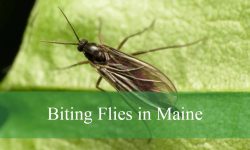Weasels are some of the most fascinating and elusive mammals in Pennsylvania. Though small in size, these carnivorous mammals are highly effective predators, adapted to hunt a variety of prey in forests, fields, and wetlands. Pennsylvania is home to three main types of weasels, each with unique physical characteristics, behaviors, and habitat preferences. Understanding these species is essential for wildlife enthusiasts, researchers, and anyone curious about the hidden wildlife of the state.
Weasels play a critical role in Pennsylvania’s ecosystems by controlling rodent populations. Despite their small size, they are agile and efficient hunters, capable of navigating through dense undergrowth and narrow tunnels. Their presence often goes unnoticed because of their secretive nature, making sightings rare and exciting for observers. With careful attention to habitat and seasonal behaviors, one can begin to identify these remarkable creatures in the wild.
From the slender Long-tailed Weasel to the diminutive Least Weasel and the adaptable Short-tailed Weasel, Pennsylvania’s weasels exhibit a wide range of behaviors and physical traits. Each species has evolved unique strategies for hunting, breeding, and surviving harsh winters. This article will provide a comprehensive guide to identifying and understanding the three types of weasels in Pennsylvania, complete with detailed information on their appearance, habits, and natural habitats.
Long-tailed Weasel (Neogale frenata)

Identification and Physical Characteristics
The Long-tailed Weasel is the most recognizable and widespread weasel species in Pennsylvania. Its elongated, slender body is complemented by a long, bushy tail, which usually features a distinctive black tip. Adult long-tailed weasels typically measure between 10 to 16 inches in body length, with the tail adding an additional 5 to 7 inches. Their fur changes color with the seasons; in summer, it is a rich reddish-brown on the back with a creamy white underside, while in winter, populations in northern Pennsylvania may molt to a pure white coat, although some retain patches of brown.
The head of the Long-tailed Weasel is small and narrow, with sharp, black eyes that give it an alert and cunning expression. Its ears are short and rounded, providing excellent hearing for detecting prey. Long-tailed weasels also have strong, sharp teeth and powerful jaws designed for catching and killing small mammals. Their fur is dense and soft, providing insulation during cold Pennsylvania winters.
Behavior and Habits
Long-tailed Weasels are primarily nocturnal but can occasionally be observed during the day. They are highly territorial animals, marking their ranges with scent glands to deter intruders. These weasels are known for their agility and speed, capable of running along fence posts, climbing trees, and swimming short distances. Their diet mainly consists of rodents such as mice and voles, but they also prey on birds, eggs, and occasionally amphibians.
This species is known for its bold hunting style, often entering burrows and tight spaces to flush out prey. Long-tailed weasels have high metabolisms, requiring them to eat frequently. Despite their small size, they are capable of taking down prey larger than themselves, showcasing their remarkable strength and hunting skill. Seasonal changes also influence their behavior; during winter, they may become more active during the day to conserve energy while maintaining food intake.
Habitat and Range
Long-tailed Weasels inhabit a variety of habitats across Pennsylvania, including woodlands, grasslands, wetlands, and even suburban areas with sufficient cover. They prefer areas with dense underbrush and abundant rodent populations, which provide both shelter and food sources. These weasels are often found near streams or rivers, where prey is plentiful and water is readily available.
Breeding typically occurs in late spring, and the female gives birth to a litter of three to twelve kits after a gestation period of about 35 days. The kits are raised in secluded dens, often hidden in hollow logs, rock crevices, or abandoned burrows. Long-tailed Weasels are highly adaptable, allowing them to thrive in various ecological zones throughout Pennsylvania, from the Appalachian Mountains to lowland forests.
Short-tailed Weasel / Ermine (Mustela erminea)

Identification and Physical Characteristics
The Short-tailed Weasel, also known as the Ermine, is slightly smaller than the Long-tailed Weasel, with a more compact body and a shorter, less bushy tail. Adults usually measure between 6 to 13 inches in body length, with a tail length of 1.5 to 3 inches. One of its most distinctive features is its seasonal coat change. During summer, the fur is brown on the back and white on the underside, but in winter, the Short-tailed Weasel molts into a striking all-white coat with a small black tip on the tail. This winter coloration makes it one of the most elegant mammals in Pennsylvania.
The Short-tailed Weasel has a slightly broader head than the Long-tailed Weasel and features dark, round eyes that help it detect movement in low light. Its body is extremely flexible, allowing it to navigate burrows, tunnels, and dense vegetation with ease. The short tail gives it a different silhouette, often making it appear stockier in comparison to the long, slender Long-tailed Weasel.
Behavior and Habits
Short-tailed Weasels are primarily nocturnal and crepuscular, becoming most active during twilight hours. They are solitary hunters, relying on stealth and speed to capture prey, which typically includes mice, voles, shrews, and occasionally birds. Like their long-tailed cousins, they are capable of entering burrows and pursuing prey into tight spaces. The Short-tailed Weasel exhibits impressive agility and can climb low vegetation to ambush prey or escape predators.
During the breeding season in spring, females establish dens in secure locations such as abandoned rodent burrows, hollow stumps, or thick vegetation. The gestation period lasts about 34 to 37 days, and females give birth to litters of four to eight kits. Young weasels grow quickly and are weaned within a few weeks, becoming independent hunters soon after. Short-tailed Weasels also display seasonal territorial behaviors, particularly in winter, when food scarcity requires careful management of hunting grounds.
Habitat and Range
Short-tailed Weasels are highly adaptable and occupy a range of habitats in Pennsylvania. They thrive in forests, fields, wetlands, and even along the edges of human development where cover is available. Unlike Long-tailed Weasels, which are more often seen in open fields and woodlands, Short-tailed Weasels prefer areas that provide dense ground cover to hide from predators and stalk prey. Snow cover in northern Pennsylvania during winter offers them camouflage and hunting advantages.
This species is widespread throughout the state, with populations thriving in rural, semi-urban, and wilderness areas. Short-tailed Weasels play a critical role in controlling small mammal populations, indirectly benefiting farmers and gardeners by reducing rodent numbers. Their adaptability to diverse habitats ensures their continued presence across Pennsylvania’s varied landscapes.
Least Weasel (Mustela nivalis)

Identification and Physical Characteristics
The Least Weasel is the smallest of the three weasel species in Pennsylvania, often measuring only 4 to 8 inches in body length with a tail of 1 to 2 inches. Despite its diminutive size, it possesses the same elongated body and sharp hunting adaptations as larger weasels. Its fur is brown on the dorsal side during summer and white on the underside, with winter coats turning completely white in northern populations. The Least Weasel also has a black-tipped tail, though the black marking is shorter and less prominent compared to other weasels.
The head of the Least Weasel is narrow with a pointed snout and sharp teeth designed for grasping small prey. Its small size and slender body make it exceptionally agile, able to enter narrow rodent tunnels and chase prey with impressive speed. The eyes are dark and round, providing excellent vision in low-light conditions, while the ears are small and rounded, enhancing auditory detection of prey movements.
Behavior and Habits
The Least Weasel is highly energetic and aggressive relative to its size. It primarily feeds on small rodents, including mice, voles, and shrews, and is known to hunt continuously due to its high metabolic rate. Least Weasels are solitary animals, exhibiting strong territorial behavior, particularly during the breeding season. Despite their small size, they are fearless hunters and can take down prey much larger than themselves.
Breeding typically occurs in spring, with gestation lasting approximately 34 days. Females give birth to litters ranging from three to nine kits. The young are raised in secure dens, such as abandoned burrows or thick vegetation, and become independent quickly due to their rapid growth. Least Weasels are active year-round, though they may alter hunting patterns during extreme winter conditions to conserve energy while still maintaining their dietary needs.
Habitat and Range
The Least Weasel inhabits a wide variety of habitats in Pennsylvania, favoring open fields, meadows, grasslands, and woodland edges. It is highly adaptable and can thrive in both rural and semi-urban environments, provided there is sufficient prey and cover. These weasels often take advantage of abandoned rodent burrows for shelter and denning.
Although less conspicuous than Long-tailed or Short-tailed Weasels, the Least Weasel contributes significantly to Pennsylvania’s ecological balance by controlling small mammal populations. Its small size and secretive nature make sightings rare, but careful observation along field edges, hedgerows, and near water sources can reveal the presence of this tiny yet efficient predator.
Observing Weasels in Pennsylvania
Observing weasels in Pennsylvania requires patience and an understanding of their habits. The best times to spot these mammals are during the early morning or late evening hours when they are most active. Winter offers unique opportunities to identify species like the Short-tailed and Least Weasels by their white coats against the snow. Woodland edges, overgrown fields, wetlands, and riparian zones are prime locations to observe weasels hunting or traveling between dens.
Because weasels are small and elusive, it is important to move quietly and look for indirect signs such as tracks, scat, or disturbed vegetation. Their slender bodies allow them to move rapidly through undergrowth, making direct sightings rare but rewarding. Wildlife enthusiasts are encouraged to use binoculars and cameras with zoom lenses to capture images without disturbing the animals.
Conclusion
Pennsylvania is home to three fascinating weasel species: the Long-tailed Weasel, the Short-tailed Weasel, and the Least Weasel. Each species exhibits unique adaptations for survival, from striking seasonal coat changes to agile hunting techniques. These small carnivores play an essential role in controlling rodent populations and maintaining ecological balance.
Observing and identifying weasels requires attention to detail, knowledge of their habitats, and patience. By understanding their physical characteristics, behaviors, and preferred environments, wildlife enthusiasts can increase their chances of witnessing these remarkable mammals in the wild. Whether you encounter the bold Long-tailed Weasel, the elegant Short-tailed Weasel, or the tiny but fierce Least Weasel, Pennsylvania’s weasels provide a glimpse into the hidden world of small predators that shape the state’s natural ecosystems.
FAQs About Weasels in Pennsylvania
What are the main types of weasels found in Pennsylvania?
Pennsylvania is home to three primary weasel species: the Long-tailed Weasel (Neogale frenata), the Short-tailed Weasel or Ermine (Mustela erminea), and the Least Weasel (Mustela nivalis). Each species differs in size, tail length, coat coloration, and habitat preference.
How can I identify a Long-tailed Weasel?
The Long-tailed Weasel is slender with a reddish-brown back, creamy white underside, and a long, bushy tail with a black tip. Adults measure 10–16 inches in body length, with an additional 5–7 inches for the tail. Seasonal color changes can make northern populations appear completely white in winter.
What is the difference between Short-tailed and Long-tailed Weasels?
Short-tailed Weasels are slightly smaller, with shorter tails and stockier bodies. They are also known for their striking white winter coat, while Long-tailed Weasels retain longer, bushy tails. Behaviorally, both are agile hunters, but Short-tailed Weasels prefer denser ground cover.
Where are weasels most commonly found in Pennsylvania?
Weasels inhabit a variety of habitats, including forests, fields, wetlands, and riparian areas. Long-tailed Weasels are more likely to be seen in open woodlands and grasslands, while Short-tailed and Least Weasels prefer dense cover and edges of fields.
Are weasels dangerous to humans or pets?
Weasels are generally not dangerous to humans. They are small predators that primarily feed on rodents. While they could potentially attack very small pets or poultry, they usually avoid human contact.
How can I increase my chances of spotting a weasel?
The best times to observe weasels are early morning or late evening, when they are most active. Look for indirect signs such as tracks, scat, or disturbed vegetation. Winter offers an easier way to identify Short-tailed and Least Weasels due to their white coats against snow.
Do weasels change color during the year?
Yes, some weasels, particularly the Short-tailed Weasel (Ermine) and Least Weasel in northern areas, molt to a white coat in winter, leaving only the black-tipped tail visible. This seasonal color change helps with camouflage in snowy environments.
What do weasels eat in Pennsylvania?
Weasels are carnivorous and primarily hunt rodents, shrews, voles, and occasionally birds or eggs. Their high metabolism requires frequent hunting, and they can sometimes take down prey larger than themselves.
How do weasels reproduce?
Weasels breed in spring. Females give birth to litters ranging from three to twelve kits, depending on species. Young weasels grow quickly and become independent hunters within a few weeks. Dens are usually hidden in hollow logs, abandoned burrows, or thick vegetation.
Are weasels beneficial to Pennsylvania ecosystems?
Absolutely. Weasels help control rodent populations, protecting crops, gardens, and natural vegetation. They play a crucial role in maintaining ecological balance by reducing the number of small mammals that can damage ecosystems or spread disease.






